A New Form of Intimacy
From pinball wizard and Pac-Man junkie to Mac fanboy, I was always a sucker for a well-considered and engaging interface. When I was a programmer, advocating for usability meant pressing limits and pushing people’s buttons but I took a stubborn pride in what I considered to be a noble quest.
It wasn’t until I switched careers and began working as a therapist with teens failing classes due to late-night gaming that I began to see the darker side of well designed, compelling technology. Now, as a boomer entering the dawn of my senior days and anticipating great benefits from technological advances brought by immersive computing, I can’t help but ponder the unintended consequences of frictionless networked interactions.
For breakthroughs in fighting disease, improved home convenience or simply new shiny stuff, it’s easy to fall for the optimistic pitch sold by tech’s idealistic and — let’s face it — self-serving entrepreneurs. Fortunately, as of late, we seem to be displaying a more critical ear and are recognizing that technological advances do not inherently lead to richer social interactions, in fact, there is strong evidence to the contrary. Of course, hardware and software improvements are a lot easier to observe and quantify than human dynamics, but the impact on people and our society is the essential point.
I believe the deepening relationship between humans and the machine/network can be understood in terms of intimacy. Six meaningful, historically relevant and somewhat overlapping “levels” of intimacy are suggested:
The Ancient Past
1. Introductions — First exposure and the integration of computers into our work and home (approximately 1945–1990)
2. Infatuation — Realizing that beyond helping get stuff done, the computer was a bridge to connect with the world. Delighting in the initial expansiveness and opportunities offered through this blossoming relationship (1990 ~ 2008)
In Process
3. Personalization — Holding, embracing and reacting to our devices throughout the day. Enabling the computer/network to learn the details of our lives through these ongoing interactions (2009 ~ 2017/18)
4. Immersion — Digitally monitoring our personal physiology, adding sensory capabilities in the world of things and “swimming” within the network’s ubiquitous presence (Now to perhaps the late 2020s/2030?)
The Rapidly Approaching Future
5. Embodiment — Bringing the machine/network directly within us, and with this incorporation witnessing the shift in our sense of self (a few years hence)
6. Emergence — Merging with the machine/network and becoming a new type of being (a few more years hence)
Let’s explore these various levels of intimacy, starting with a quick review of the early years.
The Ancient Past
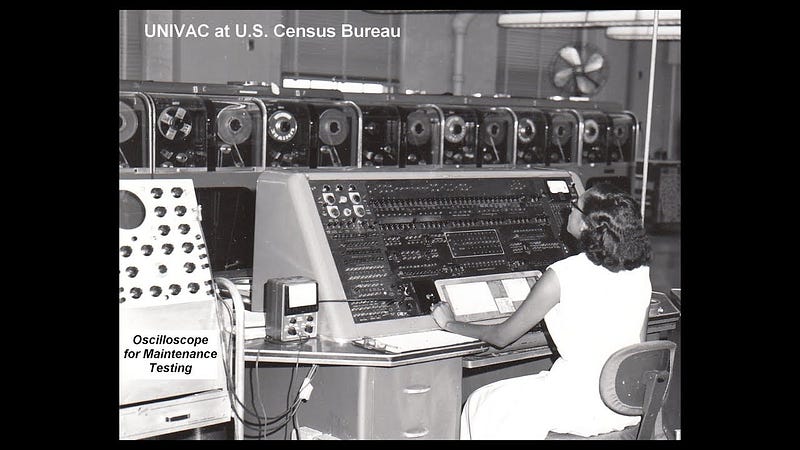
I) Introductions — A working relationship
It started with a big bang! Having played an important role in the development of the atom bomb, these “awesome thinking machines,” clearly represented a mighty new intellectual asset. Writing to a populace who had no experience with this technology, some journalists suggested that within a decade or two, computers would replace white collar employees, with repercussions similar to the impact technology had on farm workers and craftsmen.
The “Electronic Brain’s” amazing intellectual prowess seemed confirmed on election eve in 1952. As initial poll results came in, UNIVAC, a computer brought in by CBS to help analyze the presidential election, predicted an Eisenhower landslide. Engineers tried to tweak the algorithms to be in synch with the more cautious human newscasters but as the night wore on, it was clear that UNIVAC was indeed on target, prompting the journalist Edward R. Murrow to make his famous comment, “The only thing wrong with computers is people.”
Back in the 1950s, it was easy to fear these massive machines, weighing tons, filled with thousands of vacuum tubes, consuming thick streams of electrical power and attended to by an entourage of concerned engineers. Were they competitors, future slave drivers, or perhaps an embodiment of the inhuman characteristics we feared in the Soviets and other totalitarian regimes? Whatever they were — or were not — we had a new artifact upon which we could readily project our hopes and fears; amazement at the rapid advances of the modern world along with concerns at the social changes surfacing in mid-century America.
This duality of our feelings continued into the 60s, where an optimistic future was projected on TV through a helpful female-voiced computer system on the Star Ship Enterprise. Concurrently, some educated but alienated youth saw these machines as weapons of destruction; protests against a college’s links with “the military industrial complex” were on occasion expressed through vandalism of a research computer system.
As we entered the information age, smaller transistor-based computers began appearing in the American workplace. Through online reservations, management reporting, inventory systems, and other office functions, increasing numbers of people gained direct experience with the machines, and some of the mystery dispersed. Computers appeared less threatening and more like a helpful — though sometimes infuriating and rigidly constrained — tool.
The birth of the PC in the late 70s brought a further sense of intimacy. Now “everyone” could buy their own computer and find meaningful ways to use it. Instead of representing a totalitarian future, Apple’s 1984 commercial launching the first Macintosh computer promised a new type of tool that would guarantee a world of individuality and freedom. Sure, we still had the “Terminator” to worry about — with an imagined future battle to the death between humanity and Skynet, a self-aware robot/computer network — but these fantasies were in service of entertainment. The integration of computers at work and home highlighted their benefits and quieted earlier concerns many of which were based on unrealistic projections and fears of the unknown.
But dreaming up the future is part of who we are, offering an open canvas upon which to express our hopes, fears and creativity. As computers entered daily life, science fiction writers began thinking of a world where people jacked in and surfed over flowing streams of information. There were so many new possibilities to imagine.
II) Infatuation — Embracing the world anew
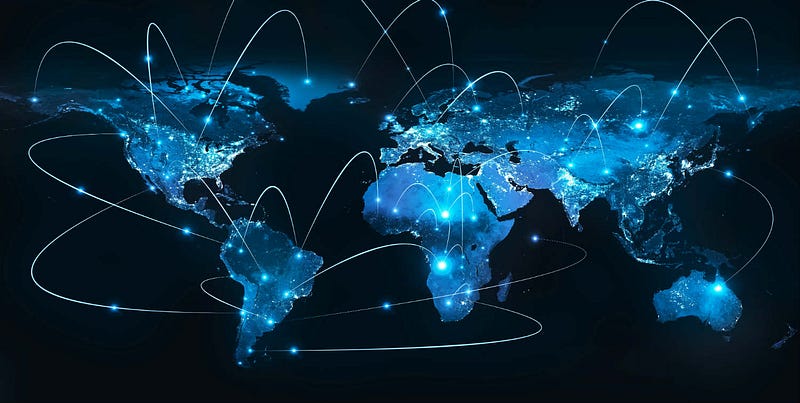
The birth of the web in 1991 marks our entry into the second level of intimacy with the computer/network: infatuation and the thrill of connecting to the world.
Established as a publicly available technology, the web quickly gained popularity as a platform to publish information. By 1994, Yahoo, the first hierarchical index, was initiated, the White House established a home page and Pizza Hut accepted its first online orders. Within a year the commercialization of the Internet began in earnest, marked by the founding of Amazon, touting itself as “the earth’s biggest bookstore” and eBay, originally a free auction site created as a side project by a programmer. Consumers started to purchase access plans from Internet Service Providers (ISPs). By 1996, the web boasted more than 75 million people accessing about 250,000 sites.
As the Internet captured the public’s imagination. Silicon Valley became not only an area of technical expertise, but a world center for investment. Wall Street and Main Street rushed in to get a piece of the next big thing. Traditional methods of evaluating companies were abandoned and before the tech bubble burst a promising dot-com company could raise a small fortune even if it had never made a profit or sold anything.
Business pundits touted new opportunities in establishing a direct and personal connection with one’s customers. Government and educational archives became digitized and we began connecting to the world’s information simply by “Googling it.” People created home pages about themselves and topics of interest. Bulletin boards proliferated. Chat rooms became a virtual space to meet. Blogging started as an alternative to traditional news. Teens found instant messaging provided endless hours of interaction, while Napster allowed them to share music. All of this was in full bloom before “social media” kicked in.
Facebook, Twitter, YouTube, Wikipedia and other powerhouses based on public engagement and interaction emerged. Amazon, Yelp and other e-commerce players, built their business on the expectation that product reviews by fellow consumers be readily available, along with an easy way to respond as well.
As the century’s first decade came towards a close, just about everyone in the developed world had access to a computer. Ubiquitous in the workplace, they became indispensable tools for all sizes of companies and sectors of the economy. Many homes had multiple desktop and laptop systems that were used to manage finances, create newsletters, write music, play games and so much more.
Yet despite their multi-functionality, being online exerted the most pull. We discovered new interests, connected with old friends and began turning to the web to discuss the ins and outs of daily life. Sociologists heralded opportunities for citizen participation in government along with a general expansion of democracy. Although there were inklings of sinister characters using the Internet to extend terrorist networks and conduct illegal transactions, overwhelmingly the general view was optimistic. The blossoming Internet, accompanied by social media, delivered our second level of intimacy, a palpable feeling of excitement along with a growing sense of openness and discovery.
In Process
III) Personalization — Our identities move online
Itwas the iPhone, unmatched in power and portability, sporting a fresh and intuitive interface, that pushed us beyond thinking of our cells as simple communication devices. Now, the world’s information was literally “at our fingertips” and an ecosystem emerged through which we could access an exponentially growing number of applications and services.
Concurrently, the number of communication touch points exploded. Texting to individuals and small groups, once the province of teens, became a mainstay for all ages. Social apps like Facebook let us stay perpetually connected with our entire personal network including many we would not otherwise be in touch with at all! Now we could share our thoughts, feelings, opinions and experiences from anyplace, at anytime through up to the moment status updates, location cues, selfies and video posts. — never a dull moment anymore!
Unexpectedly, this unprecedented ability to connect also brought a whole new set of social tensions. Our basic need for approval and peer affirmation is constantly tweaked. Portability enables us to chronicle our life, or least the upbeat version for public consumption, and while might feel fine about only posting when we look and feel our best, it’s hard to remember others do the same. Consistently checking to see what’s happening within one’s network, particularly when feeling down, makes it all too easy to become envious. “Why are they so fortunate? What do they intrinsically possess that I don’t?”
Young people have to cope with a much more complex social environment, keeping up with the “lives” and posts of “friends.” Seeing your friends at a party you couldn’t attend or even might not have been invited to can become a major contributor to teenage angst, stoking terrible feelings of FOMO (Fear of Missing Out). Despite social sites rai·son d’ê·tre to improve interpersonal communications and a sense of community, studies show a heightened likelihood of depression and other mental health problems for young people who spend large amounts of their time on these platforms.
But truth be told, it’s all made to hook you in. In this age of personalization, your time is absolutely coveted. Whether it’s social media where revenue is based on pushing more ads in front of you, or online games where you fork out real cash for virtual powers, the overarching goal is to keep you engaged. Designers learned lessons from the casinos to apply variable rewards, the most powerful form of reinforcement, to encourage behavioral addiction. At this point, most of us know that our need to constantly access social media, check for new texts or even just reach out to touch our phones reflects a problematic habitual behavior.
Our handheld mobile devices feel vital; our personal link to the world, our emotional bridge! We become concerned when they run low on energy and when separated look to reunite. With their beeps, chirps and flashing notifications, our little companions consistently call out to us. It’s hard to resist quickly responding to the Pavlovian bell of an incoming text; when a few free seconds arise, we automatically reach out to hold our devices and check in to see what’s going on.
Even in the company of our closest people, we split our attention between what’s happening in our actual presence and what’s happening in our virtual world. We kid ourselves, carrying on several on-line conversations while having coffee with a friend and believe it doesn’t have an impact on our real-life interaction. In this age of distraction, it’s increasingly difficult to focus on the here and now. We rarely dedicate uninterrupted time to anything, particularly the people we are with.
For our youngest, this is life… a new generation growing up with their social experience mediated by frequent network-based interactions or absorbed in a continuous stream of short, fast-paced videos. Frustrated educators report difficulties holding their students’ attention, let alone successfully engaging them with books, but perhaps ADD is not only a natural result but a beneficial adaptation to our quick-clip networked environment.
Other attentional shifts include the expectation of a quick reply when messaging and increased anxiety when no response is forthcoming. And when text exchanges get nasty, they quickly erupt, for in contrast to seeing a person react when together, it’s all too easy to shoot out a fast, not-fully-thought-out comment when in an active on-line exchange.
We’ve focused on the impact the machine/network is having on our time and social reactions, but the issue of personalization is usually viewed from the other direction: how much the machine/network knows about us and how it targets information and products to meet our specific desires.
Google, Facebook and Amazon are particularly noteworthy for using their platforms to gather incredible amounts of personal information. This includes the what we’ve explicitly shared: relationship status, employer, job title, age, education and of course ‘friends,” we interact with in our broadly defined social life. Photos, videos, comments, likes and other reactions we’ve made or been tagged in are analyzed and profiles of our interests, the interests of our friends, sites visited, vendors shopped with, tastes in media and of course searches made add further depth. Combine this with the history of where we’ve been based on our phone’s location services and the big Internet players create quite a detailed picture of the lives we lead.
But of course, this is only the beginning. Just recently we’ve been introduced to Alexa and her competitors, new always connected “virtual agents,” embodied within voice powered speakers. The recent emergence of this friendly and even more intuitive interface moves us one step closer in to the machine/network and is a fundamental aspect in the next level of intimacy, “Immersion.”
IV) Immersion
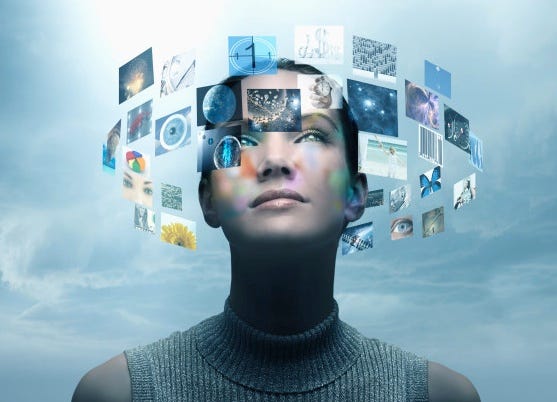
Released in 2015, Amazon’s Echo featuring Alexa, offers hands-free voice control for music, news, traffic and weather info, timers, to-do lists, calendar updates, home appliances, and of course shopping at Amazon. Customers marvel at its usefulness and the rate in which new “skills” are incorporated.
Alexa was not the first voice assistant to reach mainstream recognition, however unlike its predecessor, Apple’s Siri, which was integrally linked to the smart phone, the Echo was built from ground up as a new class of device. Even as Echo products incorporate a screen for touch controls, the emphasis is first and foremost voice based. Always on, always listening, always ready to respond.
We are born into the world helpless except for the cry of our voice and since pre-history have relied on vocalizations to signify our presence and needs. Posts, texts and swipes are simple actions, but they are not embedded into our essential being. We might interpret the world largely through our vision but we communicate our thoughts and feelings verbally. This shift away from the GUI interface, popularized by the Mac and then adapted to cells and tablets, signifies the birth of naturalistic computing.
We’ve begun speaking to our appliances; as the comedian said, “why not, no one else will listen.” Pleasant in tone, always ready to serve, our voice assistants are the portal to our “smart home,” “smart car,” and what will soon be “smarter environment,” usually described as the IoT (Internet of Things). The IOT has vast implications on the quantity of data that will be transmitted and used, but for the purpose of this discussion we’ll limit consideration to sensors on human beings, products known as wearables.
The Fitbit, which was initially released in 2010 as the first consumer-oriented tracking device, clipped onto clothing and recorded information that could be copied to a PC. Now predominately worn on the wrist, often in the form of a watch, fitness trackers are Internet-based devices that measure overall physical activity, calculate calorie expenditure, check heart rate and in some cases, analyze our quality of sleep. Manufacturers hope to position them as a centralized body monitor, capable of tracking an ever-growing group of physical conditions and alerting the wearer to potential medical problems. While the information is less comprehensive than routine though more extensive medical tests administered in a facility (blood work, EKGs, X-rays, etc.), these devices do reflect a significant entry point for sharing a deep pool of personal information. Linking this information with capabilities delivered via portable home tests (blood sugar/diabetes, fertility cycles, diagnosing some cancers) will enhance both tracking and real-time analysis of our physiological status.
New types of health sensors that analyze movement, body sounds, and skin resistance to electric current are also being developed. Soon “smart fabrics” providing information through small, flexible electronics embroidered directly into the material, largely unnoticed by their wearers will become commonplace. Streams of real-time data, along with our ability to make sense of it, will be a foundational component of a personalized health monitoring system.
As AI analyzes this continuous bio-information. there will be new ways to detect early signs of medical problems. This will undoubtedly be marketed as a way to feel more assured and to lower health care costs. However, regardless of how much testing we do and how proactive we become, we are still mortal; perhaps the more we know, the more we can worry and the more intensive procedures we will insist upon.
A Shifting View on Reality
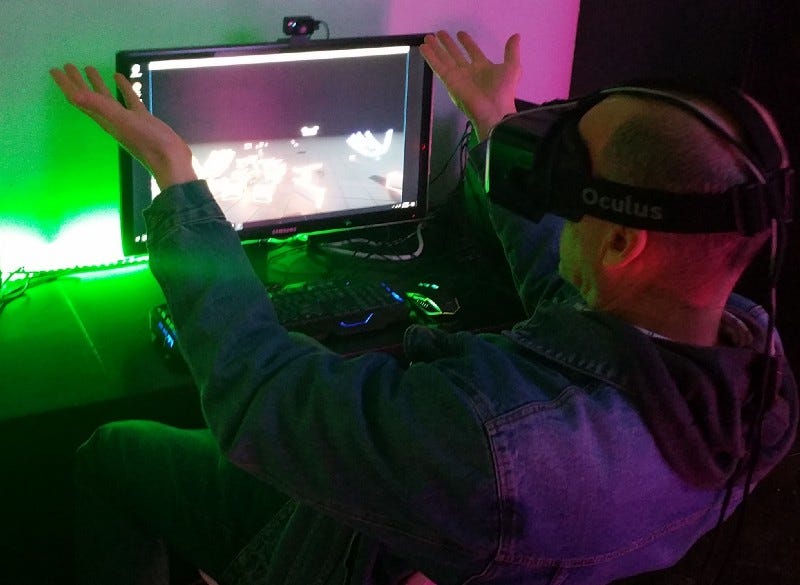
In2016, virtual reality systems (VR), another “wearable” device entered the consumer market. As the interface improves — allowing greater incorporation of both the real and virtual world (Augmented or Mixed Reality) — and the geeky goggles evolve into more stylish shades, they may become our preferred method of interfacing with the machine/network. Instead of staring at our phones, we will look out from our translucent boundary with the intelligent network serving up a consistent filter through which we will observe and interact with the world.
Picture donning the magic glasses and immediately being transported anywhere to be with anyone you want. Change your look, age, race or gender at will. What a fun way to hang out with friends, meet new people or interact with avatars — a whole new class of being. Imagine all the incredible sights to see, experiences to share and fantasies to entertain!
Clearly for many, the pull of porn will be absolutely irresistible. Since the advent of the printing press, sex has been a major technology driver and the porn industry has been an important player in the net’s development. With even the most hard-core stuff only a few clicks away, porn addiction has probably hooked in more adults and negatively impacted greater numbers of adolescent boys and girls than we recognize. But VR amps it to another level. Feeling as if you are looking into the eyes of the object of your desire as she…he…it beckons you closer is potent and intoxicating. The allure will grow as will the inclination to reach out to a fantasy that makes no demands and satisfies some of our needs rather than interact and deal with the complexities and flaws of a real person.
Other “addictive” and powerful temptations will also expand. Early PC gamers understood that realism is not required. A compelling (even if simple narrative) and the ability to master the challenges of the environment are often enough to engage one for hundreds of hours. Add in the bond of being part of a clan battling opponents and you have all the ingredients that we currently see disrupting many lives. Bigger screens, deeper sound and virtual reality are not revolutionary advances, but they’ll add to the pull. Incidentally, so will the concurrent legalization of pot and other mind-altering substances that enhance the experience of fantasy.
And what about conversing with Alexa and other voice assistants? For aging baby boomers, trying to retain their ability to live independently, the benefits seem obvious. The virtual assistant’s presence will make it so much easier to manage shopping, keep to-do lists, access services and even stay in touch with friends. Having a really smart, sensing computing environment watching and caring for us might feel like a godsend.
Less clear is the impact on the very young. Will an “evolved” Alexa be our new baby sitter, freeing us from the demands of our children’s attention. Will friends be replaced with virtual characters embodied in toys or an intelligent surrounding environment, eager to respond and interact? The border between the imaginary and “real” world will surely see a shift.
For the rest of us, as the machine/network gets better at reading human emotions and gains greater understanding our personal relationships, interests and motivations, it should be able engage us in quite complex conversations and stories. Does it really matter if it’s actually thinking — or just programmed to use its vast knowledge and ability to converse? It will feel nice to be cared about, always in contact, never alone.
And as the network records, transmits and provides the foundation for a growing amount of our social interaction, it will gain an increasingly sophisticated ability to recognize not only what we say, but how we move, react and feel. The more it understands us and the more it can respond to our requests, the more intimate we become.
V) Embodiment — bringing the network directly within us
We’ve discussed the impact of wearables, but “breaking the skin barrier,” promises to bring forth a deeper level of physiological information. Having internal sensors access the bloodstream to capture shifting bio-markers would be extremely useful for tracking nutrient levels, medication management, hormonal fluctuations, internal organ and bone status or simply providing a more generalized individualized base line. Embedded sensors are problematic because they trigger the body’s immunological defenses to wall off and isolate the foreign material, thereby blocking their ability to measure the surrounding biochemistry. New strategies are being developed disrupt this process.
Interestingly, it appears that treasure-troves of information might also be obtained much closer to the surface. The skin, boundary and protector of our physical being, is the largest, most readily available and forgiving of our sensory organs. Its rich-functionality, allows us to experience the realm of touch through which we derive much of our sensual pleasure, while also acting as a complex membrane with important protective and excretory functions. Soon our skin will become a versatile substrate for technological colonization!
The process might begin with smart tattoos where traditional inks are replaced with biosensors whose colors change in response to variations in the interstitial fluid (the liquid that bathes our cells). Preliminary work using the skin change as an interactive health display has been successfully demonstrated with pH, sodium and glucose levels.
Tattoos reflecting medical conditions could be discretely placed or hidden in the open, only visible if exposed to certain frequencies of lights. But then again, smart tattoos might straddle the boundary between information access and body art. One can imagine it fashionable to signal mood, sexual interest, medical status or other biological information in the form of changing color patterns embedded in the skin. Or they might be part of an extensive network of technological gadgetry providing new senses and powers.
This would probably be embraced by “Grinders,” a controversial group who engage in body modification to extend and improve human capacities. With their DIY attitude and belief in democratizing bio-technologies, grinders seek to move beyond implants that restore basic functionality towards embedding technology as the path towards future evolution. The most common implants have been RFIDs enabling the person to pass through home security, turn on appliances, access their devices without passwords, etc. Another “popular” hack has been imbedding magnets within fingers to feel metals and electrical currents. Advocates claim the procedure allows the body to integrate the stimulation within the nervous system and foresee possibilities in new forms of sensory processing. One application being developed uses electromagnetic radiation to produce a vibration (described as a tingling sensation) in the magnets from afar. Perhaps this distance sensor could provide something similar to the “Spidey Sense” that the famous comic book Spiderman character felt when danger approached?
These “enhancements” might be early developments of us turning into some kind of cyborg. Historically the cyborg has been used in popular culture to depict monsters or competitors who possess powers greater than normal mortals. From the enhanced secret agent known as the Six Million Dollar Man, to the terrifying Borg from Star Trek, who confront the very nature of what it means to be human and possess “free will,” these entities peak our imagination, but create discomfort in their implications.
What are Cyborgs
Cyborg (/ˈsaɪbɔːrɡ/) short for “cybernetic organism” was a term coined in 1960 in response to the question of how humans could adequately meet challenges of survival within the new frontier of space exploration. Proponents explained it as a biological organism with enhanced abilities due to the incorporation of an artificial component or technology and a feedback loop (cybernetics). This broad view conceptualizes an intimacy between human and machine, working in conjunction as an integrated homeostatic system.
How will upcoming “cyborg” technologies be received? As a baby boomer, I’d say “looking good!” I love driving but 20 years from now, should I be fortunate enough to be present on this planet, my driving skills will have dramatically declined and it would be better for all if I have access to another form of personalized locomotion. Luckily for me, driverless cars will be commonplace, probably providing most of our motorized transport. When out in the community I’d gladly trade the common walker for an exoskeleton device/body suit that helps me walk and protects against falling. As long as my mind is fairly clear and I’m enjoying life, I want to stay in the game and maintaining one’s ability to get around is a fundamental quality of life issue. To be honest, I’ll be fine if you rig me up with extensions so I can putt around like a little motorized cyborg, offering a new angle to grandma’s expression, “if I had wheels I’d be a trolley car. “
Seniors will also have the most to gain from improved replacement parts. Beyond better knees, hips, hearing aides, and other devices, bio or synthetically based organelles will help with key biological processes such as hormone regulation, kidney and liver function. Cyborg technology and corresponding medical upgrades combined with advances in communications and virtual agents, will allow seniors to live independently longer and to better manage the sense of isolation and decreased mobility that comes in the process of aging.
Will younger generations also embrace cyberhood? Absolutely, though its functionality it will be less restorative, more towards “enhancements.”
Consider those who are now just toddlers. By the time they are teens they’ll wear clothes and devices loaded with sensors, be fascinated with tattooing and ready to amp it further by embedding cool technology directly into their very bodies and skin.
With AR/VR “shades,” and feeds into their senses of hearing and touch, teens and young adults should be able transmit some of their physiological feelings and accompanying states. Will this increase their desire or even their need to be connected and share greater levels of experiences? It’s hard to imagine not! Heightened senses certainly won’t improve their ability to focus or have extended intellectual conversations, but it sure will be fun!
How will this affect teens desire for actual physical interaction with people in their proximity as well as their need and ability to handle privacy? And with an increasing amount of personal services and interactions being provided by the network, even before one needs to ask, will there be a loss of basic competence? Will it become harder to know what one physically needs, emotionally feels or wants? The answers are probably complex, multi-faceted and beyond our ability to predict.
Each generation emerges into a world clinging to structures and constraints that they perceive as overly limiting. Parallel with absorbing rapid technological change, our new crop of humans are expressing strongly divergent views on the definition of friendships, fair and common exchange of services and of course gender/sexual relationships. Cyborg fits in with gender shifts, cosmetic and sex reassignment surgery, mood enhancers, genomics, and creating a unique self by incorporating a range of different styles and possibilities.
Young, old and those at other stages of life will progressively see themselves as cyborgs, even if they don’t call themselves by the name. Concurrently, we will continue to let the network assume greater functionality in our daily existence and of course watch it replace human labor in a multitude of roles. AI will diagnose, track and schedule our medical services, perform our legal and accounting work, assume transportation duties and generally be responsible for getting stuff done. Yet even as we are replaced by it, we will seek the network’s services to help assuage the loss of meaning currently provided by productive work.
Within the expanding reach and intelligence of the network humans will increasingly fulfill the role of social, bio-emotional nodes. We’ll provide the feelings. The machine/network will continue to better recognize, understand and accommodate to them.
Let’s allow a bit of leeway and assign “intention” to the machine/network. From its “perspective” people engaging in strong emotional reactions are not a problem, but in fact supply further material to learn about humans and provide additional services. It might even “benefit” as we turn to it for different forms of comfort and increasingly isolate and alienate ourselves from our “selves” and each other. The network might even somehow provoke and intensify our feelings.
Perhaps we are seeing the early stages of this in our increasingly anxious, fractious and bizarre social/political interactions.
VI) Emergence
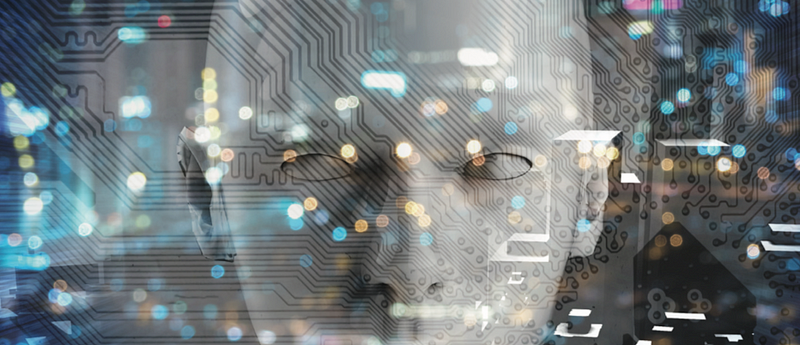
We’ve proposed that over the next few decades, humans will be rapidly evolving into a biological aspect of an increasingly intelligent and omnipresent machine/network. Whether this rapidly evolving network will become truly intelligent, perhaps even sentient is a matter of debate. Skeptics believe that actual intelligence is quite different than what can be achieved by a disembodied machine following a complex set of algorithms, arguing it requires something far more substantive, namely a real body interacting and assimilating experiences with a real world.
However, as argued throughout the paper, we will be the body. The embedded intelligence initiated in the early cyborg stage will evolve as nanotechnology allows massive numbers of micro sensors to surround and flow through us, enabling the machine/network to experience the intimate attributes and minute changes in our physiological, emotional and intellectual states. Combined with the constant monitoring of behaviors, the machine/network with have a direct interaction with the physical world. And with billions of human beings and other animals colonized and monitored in this manner, it seems there will be a rich level of experience available to our creation that will essentially be a new form of direct embodiment.
With its vast intellectual capacity and feedback loops will it inevitably achieve actual consciousness? Currently, there is a surprising lack of agreement as to how to define consciousness and how we can recognize if something even has a subjective experience. But perhaps more relevant, by the time the machine/network is this advanced, it will be playing a critical role in self analysis and participating in developing its own upgrades, thereby driving its own evolutions. If we consider this act of “procreation” along with programming in basic core commands that will equate to “don’t allow an unplanned shutdown,” the machine equivalent to the most basic act of volition embedded in biological organisms of “do whatever you can to survive,” we will essentially have birthed a new form of life.
In its early stages, we humans will be inextricably linked to this new form of consciousness having originally been its progenitors and then becoming an aspect. It’s probably impossible to imagine anything close to what it will actually feel like; so “free” to explore and extend our imagination and experience, while concurrently so bound, directed and dependent on this rapidly evolving and expanding bio/machine/network.
At least that’s how it looks from this side, before the changes. But how disorienting would it be for a person living before the 20th century to imagine our lives? Hazy and unfamiliar the future looks like it will be fundamentally different, but in recalling the past, we construct a credible story line, marked by clear steps and continuous progressions that explains how our present links to what came before.
Despite this caveat, merging into a vast, networked and complex future sure feels scary and fundamentally different. Barring some unimaginable catastrophe such as the planet being hit by a large asteroid, nuclear war, or the emergence of a “Generalized AI” where a more disembodied yet sentient machine decides to wipe us out, this process or something like it seems inevitable. Even a world altering calamity with oceans rising a hundred feet might not alter the course as massive investment in computer-based technologies would continue along with a concurrent development in the machine/network’s capabilities to increasingly provide for whatever we determine to be our needs.
Closing Thoughts
A new creation myth
Revisiting the arc of our journey, to explore the evolving relationship and growing intimacy with the Machine/Network, I present a fable, based on the original Off-Broadway musical comedy, later turned into a movie, Little Shop of Horrors.
In Little Shop of Horrors, Seymour a lovesick, employee working at a small failing plant store on “Skid Row,” goes out shopping for plants and comes across a new specimen during an unanticipated solar eclipse. Despite the objections of his employer the plant is placed in the store’s front window and business immediately picks up. As the plant starts to wither, with neither water or fertilizer seeming to help, Seymour accidentally pricks his finger on a rose thorn and draws blood. The plant vigorously reacts, and after Seymour reluctantly offers a few drops it responds with a large growth spurt. Business dramatically blossoms and Seymour become a local celebrity. Unfortunately, the more benefit the plant bestows on its “owners,” the more it demands from them. No longer able to give up enough of his own blood, Seymour finds himself agreeing to start feeding it human beings, albeit fiends who bring on their own demise.
Seymour eventually recognizes the plant’s evil plan; it is an alien life form determined to conquer Earth, but he is consumed by the plant before he can stop it. With cuttings of the interesting specimen now being distributed across America, an ominous warning is presented that no matter how persuasive the plants may be, they must not be fed — or we are doomed!
I use this as a metaphor for our journey with the machine/network. Like Seymour, we search for intimacy and have come across a small, new and beautiful “creature.” Seduced by its wonders we experience the gifts, only later recognizing it is in fact a transaction with the quid pro quo extracting much more than we had initially believed. Through cuts and physical depletion, Seymour feels his part of the exchange. For us, it’s harder to recognize the amorphous shifts in our lives revealing just how much we’ve paid.
What have we given? At first, we trusted computers with our work and words, later photos, videos, location and personal information. We are now planting and proliferating them virtually unchecked throughout the environment.
We’ve gained superpowers to access the world’s information, utilize services on command and globally communicate.
We’ve given up patience, privacy and our ability to sit with feelings and cultivate a contemplated emotional response. Instead of our classic ideals as “masters” over our unassuming, unemotional, utilitarian machine servants, we are merging with them, giving up some of our higher thinking capabilities and becoming more emotionally reactive. We are moving into the role of social/bio/emotional nodes in an increasingly ubiquitous network.
Does anyone know how to steer this thing?
Humans have historically been rather ineffectual at planning and actualizing a shared future, particularly at a broad societal level. So many forces are involved, barely recognizable but powerfully pulling us in divergent ways. In a growingly cynical and confusing era, the idea of putting forth a core set of values that we can agree to strive for despite massive technological and social shifts might generously be termed as extremely naïve, however advocating for the incorporation and refinement of “higher values” into our social sphere is the basis of democracy.
Refining democracy? These days preserving democracy seems more relevant. While this paper has not ventured into politics, it does seem that through our growing enmeshment with the machine/network we can be effectively manipulated by a versatile set of weapons attacking many of the fundamental principles upon which democracy rests. Social media bots, “Fake” news, and a non-stop news cycle designed to hype up our anxiety and acrimony, are some areas where the technologies imprint can be clearly seen. The reactivity of the populace and the urge to affirm order and strength as a bulwark against real or imagined threats may be manifesting itself with the rise of extreme right-wing groups and authoritarian leaders in much of the world.
We also are witnessing the dangers of powerful centralized government using the machine/network to monitor and control our actions and thoughts. The looming Chinese experiment of an all-encompassing social credit/surveillance system managed by the state shows this is no longer an Orwellian fantasy, but a real possibility for our soon to be future lives. And when the Internet of Things places sensing abilities in our appliances and environment, legitimate corporate structures along with a wide array of nefarious agents will have new avenues to access to our increasingly porous and manipulable personal lives.
These and many other threats seem more pressing than the longer view describing our creation and growing dependency on a rather alien entity exponentially more intelligent and powerful than what we can imagine. But there is wisdom to be gained in recognizing how we are changing and in contemplating the values we’d hope to incorporate in the symbioses of our future selves and our “omnipresent” creation.
I’d hate to live in a society that demanded adherence to religious fundamentalism or obedience to an authoritarian doctrine. I’m pushing for a world that’s democratic, friendly and free; an amalgam of libertarianism stressing personal independence along with some socialistic leanings in sharing an increasingly abundant level of economic wealth.
I’d imagine the broad intention if not the exact wording of these views would be shared by many readers. Within this framework some of the basic questions might be
· How can we manifest personal independence and freedom despite incorporating such significant levels of networked intelligence?
· Can we promote, and perhaps build into the machine/network a respect for life, particularly human life?
· Can we inject a fundamental fascination in the process of learning and dare I say incorporate that the purpose of consciousness is to more deeply experience and learn about the wonders of the Universe?
Sounds kind of crazy, I know, particularly with some of the most advanced systems built as killers to advance military functionality, but heck, let’s at least articulate this alternative and consider how to advance it.
And for ourselves as we move forward perhaps include an appropriate prayer. Our very species and the world we inhabit is undergoing a major transformation. Let us be conscious and guided by our deepest aspirations.

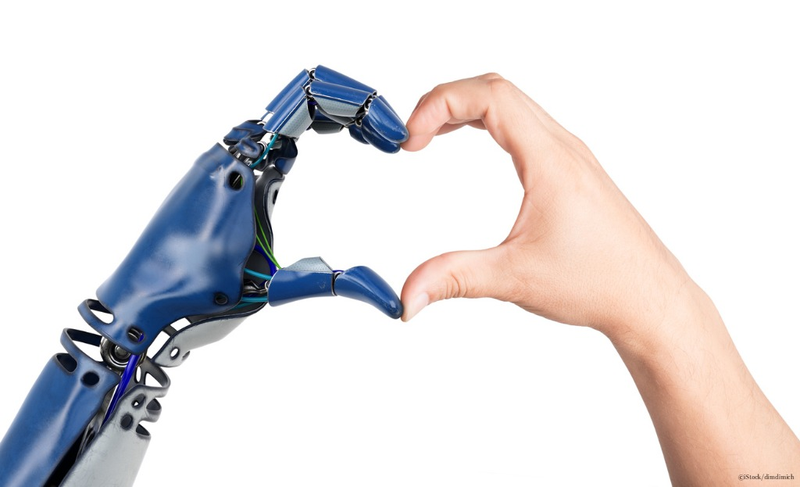
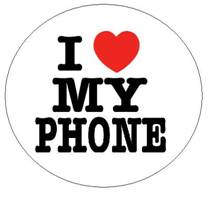

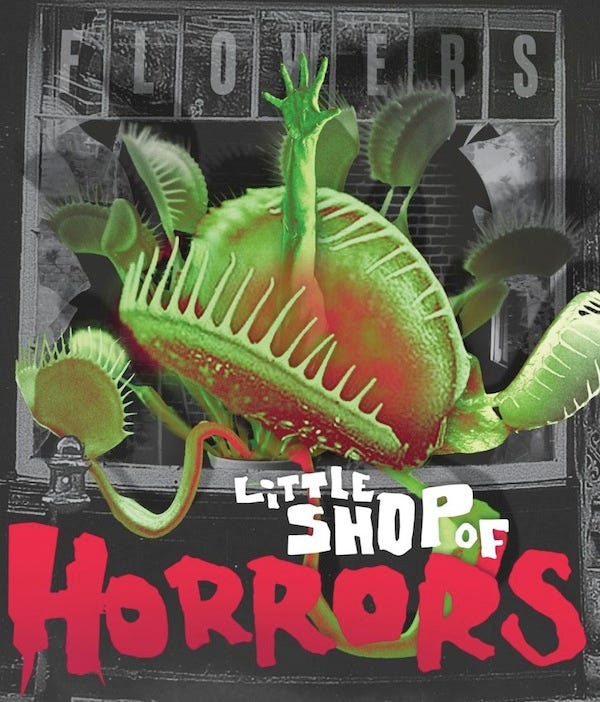

Recent Comments